Advertisement

JORDAN WOLFSON: Riverboat song
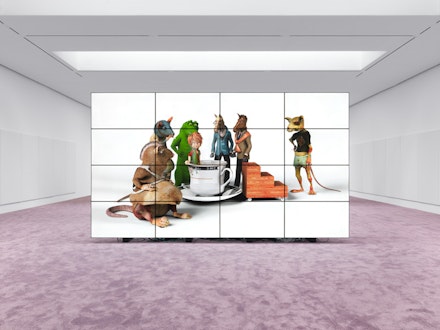
We hear Riverboat song (2017-2018) before we see it. The first view of Jordan Wolfson’s sixteen-channel video installation is of its back, a hulking mass of wires, monitors and media players arranged in an upright grid on purple carpet that covers the gallery floor. Suspense is built into the approach: one has to round the corner of this monolith to access the main event. The other visitors can be seen before the video itself, an inversion of movie theaters where spectators silhouette the image. They react to Riverboat song with nervous laughter and grimaces, mirroring the video’s absurd and explicit content.
A ragtag troupe of animated characters—three rats, a young boy, an alligator, and two horses—engage with the viewer in a series of vignettes. The alligator chants “death” to a crunchy drum beat as his tail wiggles in a gloryhole cut from the obituary section of a newspaper. The rats, chain smoking and clad in greasy shirts, are integrated into found footage of an airplane’s interior. One lounges in a vacant seat; another strolls down the aisle past oblivious passengers, a specter of indecency. The boy performs a provocative dance to the rapper Iggy Azalea’s song Work (2014) until large breasts and butt cheeks pop out of his clothing. He’s a mischievous, prepubescent redhead wearing a green vest, red shirt, and frayed capris—the animated version of the figure hung from chains and battered in Wolfson’s 2016 work Colored sculpture . In another scene, he twirls and dances as he gobbles up cadmium chartreuse fountains of urine that stream endlessly from his exposed penis—rabid delight in his bodily functions breaks bodily limitations. All the while he nods vigorously at the viewer and makes uninhibited eye contact as if daring us to keep looking. Destructively curious and crudely sexual, yet self-aware enough to know better, he’s a cartoon distillation of young male energy.
A monologue voiced by Wolfson is delivered through the animated characters, who appear sequentially and address the viewer as a future lover. The boy begins by enumerating a string of wants: “I want to drink your blood,” “I want to dance naked for you to pop music,” etc. His desires alternate between disturbing and strangely sweet, but they’re expressed in an unwavering, matter-of-fact tone that indicates psychopathic detachment. The other characters deploy the same attitude: while the alligator takes a bubble bath, his phallic tail gesticulates as he muses, “I’d also like you to do things for me, like cook, or advise me on cleaning. Maybe even do it for me.” Gestures that are standard in relationships are drained of romance by the alligator’s impassivity; his words approach the language of abuse. Wolfson toys with context and tone in this way throughout the video, making the familiar objectionable and the objectionable banal.
The attitude of the characters takes on another form in a sequence of YouTube screen captures soundtracked by Otis Redding’s 1966 hit Try a Little Tenderness. Videos of white-on-black violence, a sexy woman dancing, artificially intelligent robots, and a tutorial on “The Best Way to Cut an Apple” are tactlessly played back-to-back with the same placid detachment exhibited by Wolfson’s characters. Otis Redding provides an ironic counterpoint as he sings, “Try a little tenderness; that's all you gotta do.” By recreating the adjacency of disparate genres of internet content, Wolfson challenges the viewer to distinguish between different kinds of visual stimulation. The disgust of witnessing violence and the satisfaction of seeing an apple about to be sliced are ostensibly two incomparable experiences, yet their proximity forms a hybrid experience—one in which signifiers are crosswired to confuse discomfort with pleasure, the exceptional with the mundane. Riverboat song is an exceedingly rich portrait of the anarchic circulation of media in the digital age.
Sign up for the Brooklyn Rail newsletter
Get notified about upcoming live conversations with artists and when the next issue of the Rail drops.

Start › Exhibitions › Jordan Wolfson
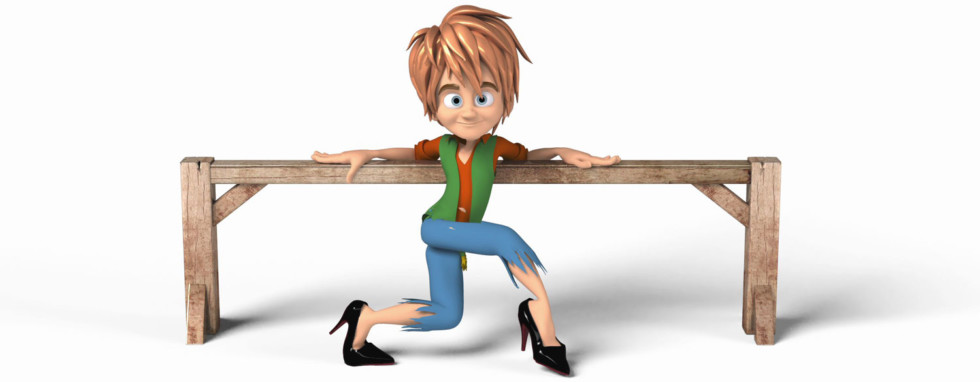
Jordan Wolfson, Riverboat Song, 2017 Video still, 7:28 min © Jordan Wolfson. Courtesy the artist, David Zwirner and Sadie Coles HQ, London
Jordan Wolfson
Riverboat song, 1.2 2019 – 1.9 2019.
Wolfson’s latest video “Riverboat Song” (2017–18), was recently added to the Museum’s collection. This video sculpture mixes computer-animated scenes with found clips from the less savoury sides of the internet, loops of pop music and a monologue by the artist himself. The boyish Huckleberry Finn-like protagonist recurs in Wolfson’s works, possibly as an alter ego or a symbol of the American Dream – searching for happiness, adventurous, free. The characters in his often technically advanced sculptures and animations are both fascinating and challenging, often leaving us with a sense of unease.
Video: Jordan Wolfson on Riverboat song and his creative process
Entertaining and provoking
What might seem like an entertaining flow of randomly arranged imagery in “Riverboat Song” – computer animations, music, garnered partly from popular and internet culture – are, in fact, meticulously composed scenes that put us off balance. Wolfson’s manipulation of the apparently familiar puts trust between sender and receiver to the test.
The artist himself describes that his compass when creating a new work is the search for a specific, real feeling. The road to that experience can be humour, dramaturgical short circuits and a degree of shock.
Wolfson belongs to the “post-internet” movement
Wolfson is one of the most exciting young artists on the American art scene right now, whose norm-breaking works occasionally cause outrage, for instance, at the Whitney Biennial in 2017, where he provoked debate when he presented “Real Violence”, a VR work where viewers witness a re-enacted violent assault. He is considered to belong to a movement in art that is sometimes called “post-internet”, which comments on and is inspired by a digital information and consumer society.
Jordan Wolfson finds his reference points in various fields, including the Hollywood movie industry, with its special effects illusions and capacity to manipulate. Production is time-consuming, expensive, and relatively small, and can be seen as a series of works that are “released” one by one, like films or novels.
Stunt robots used in Wolfson’s works
Wolfson is known, among other things, for his use of animatronics – a form of jointed robots that can be used for stunt tricks, which Wolfson has programmed with face recognition technology so they can interact with the audience. As in “(Female Figure)” (2014), a monstrous dancer fastened to a mirror, who is both seductive and terrifying. Or, as in “Colored Sculpture” (2016), where a puppet suspended by chains from a gantry system is subjected to a series of mechanical assaults, only to challenge us by uncannily seeking eye contact.
Based in Los Angeles
Jordan Wolfson was born in New York in 1980 and now lives in Los Angeles. His works have been shown at Tate Modern, London, S.M.A.K., Ghent, The Broad, Los Angeles, and the Stedelijk Museum, Amsterdam. He has a BFA in Sculpture from the Rhode Island School of Design in New York. He also studied for one year at the Konstfack University College of Arts, Crafts and Design in Stockholm.
Curator: Lena Essling
Curator tour (in Swedish)
Welcome to preview and artist talk.
Friday 1 February at 18–20. In the Cinema and Moderna Bar. In English. Free admission.
At 18.30: Jordan Wolfson in conversation with Lena Essling, curator . The exhibition is open 18–20. Moderna Bar is open.
Tuesday 19 February at 17.30, with Curator Lena Essling.
The exhibition is on the 4th floor
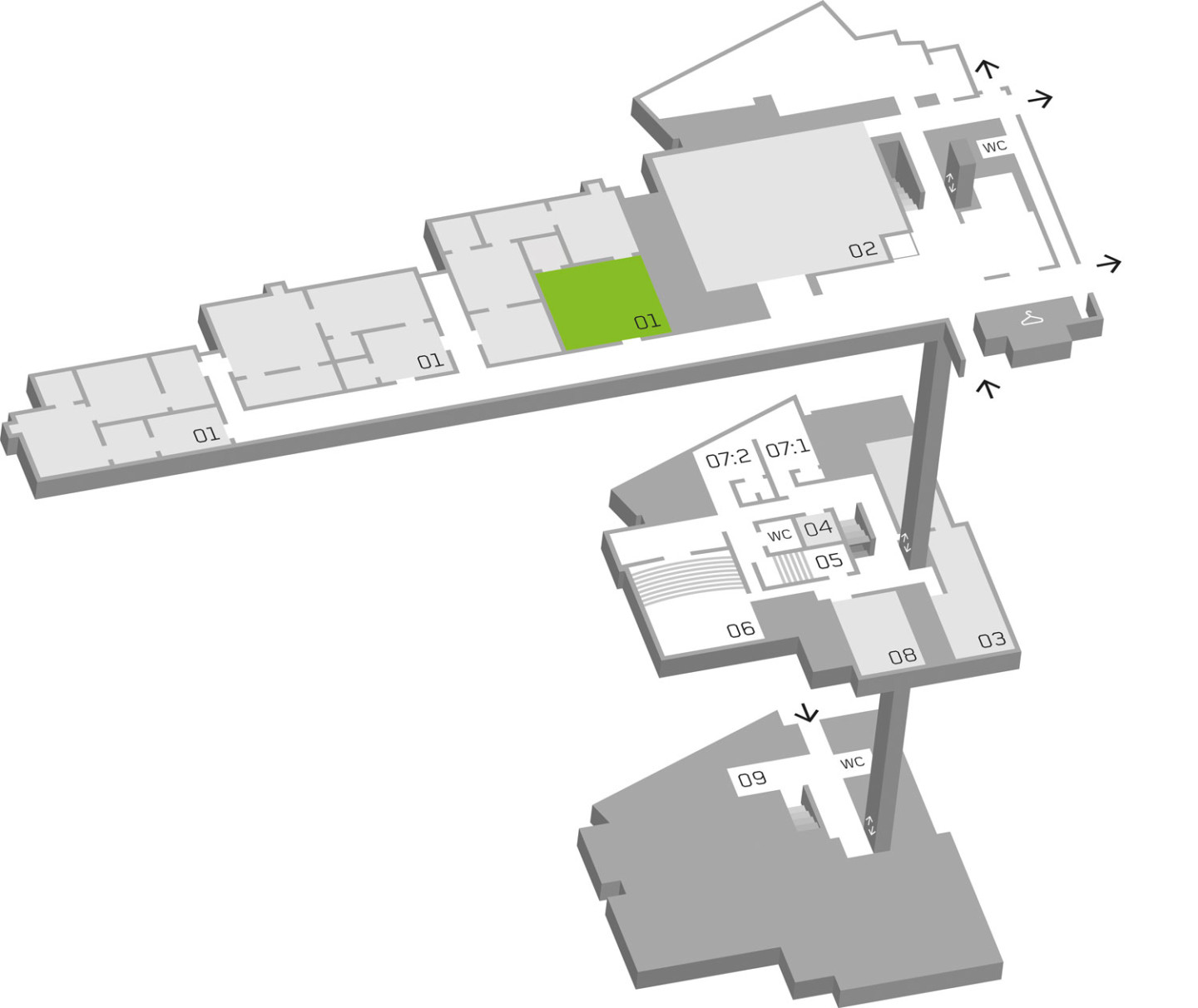
Jordan Wolfson, Riverboat Song, 2017–18 was acquired and donated by The American Friends of the Moderna Museet .
With support from Panasonic and Informationsteknik.
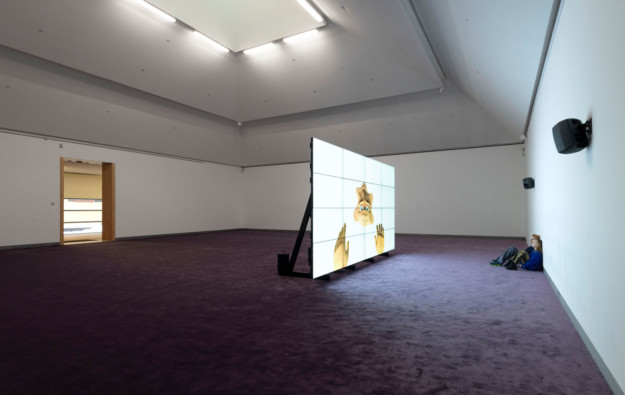
62 Kingly Street, W1B 5QN, London, United Kingdom Open: Tue-Sat 11am-6pm
Jordan Wolfson: Riverboat song
Sadie Coles HQ Kingly Street, London
@ Sadie Coles HQ Kingly Street
- share on Twitter
- share on Facebook
- email to a friend
Direct link:
Thu 27 Apr 2017 to Sat 17 Jun 2017
62 Kingly Street, W1B 5QN Jordan Wolfson: Riverboat song
Tue-Sat 11am-6pm
- Contact Gallery
Save Exhibition
Artist: Jordan Wolfson
In his first exhibition at Sadie Coles HQ, Jordan Wolfson presents a new video, Riverboat song – installed in the Kingly Street gallery – and a group of new works in a parallel display at Davies Street.
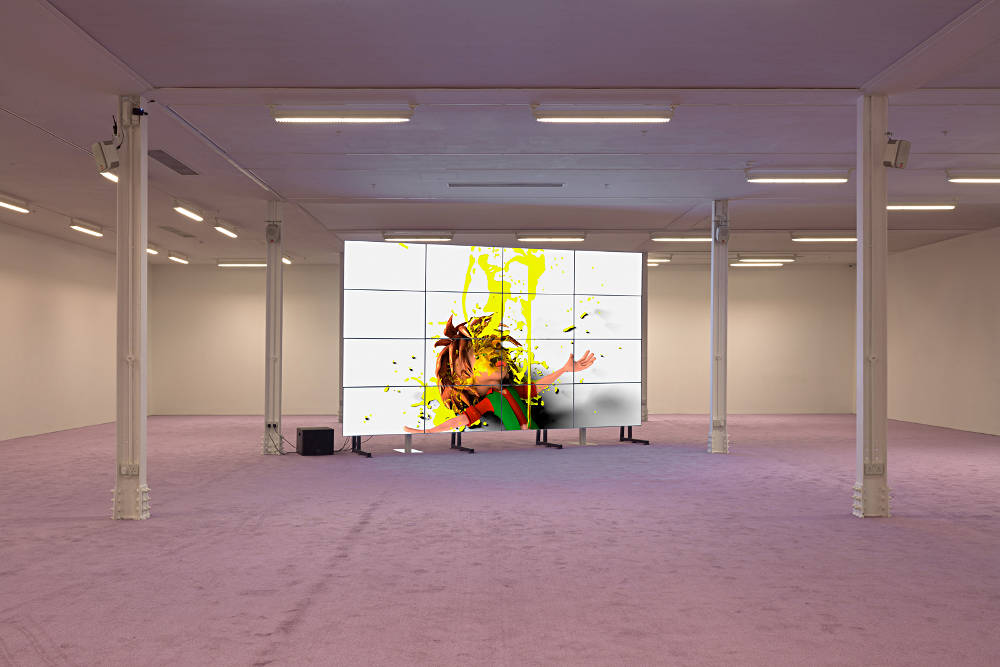
Over the past decade, Wolfson’s practice has traversed video, film, installation, performance, print and photography. Employing animation, digital imaging and animatronic sculpture, his recent work has centred on ideas of literal and virtual reality, especially the projection of inner impulses (desire, optimism, violence or guilt) into constructed selves or scenarios. Riverboat song is a narcissistic surreal nightmare, drawn from the banalities and horrors of contemporary life and its online extension. Combining animation and found clips, pop soundtracks and voiceover, the video revolves around a Huckleberry Finn-style character (seemingly lifted from a Disney classic) who has recurred and morphed in Wolfson’s work. In one sequence, the boy delivers a monologue voiced by the artist. Addressed to an absent lover, it is a chain of deadpan statements – confessional, coercive, retributive. The words are funnelled through other cartoon cut-outs including a crocodile in the bath and a pair of dining horses. In his first exhibition at Sadie Coles HQ, Jordan Wolfson presents a new video, Riverboat song – installed in the Kingly Street gallery – and a group of new works in a parallel display at Davies Street. Over the past decade, Wolfson’s practice has traversed video, film, installation, performance, print and photography. Employing animation, digital imaging and animatronic sculpture, his recent work has centred on ideas of literal and virtual reality, especially the projection of inner impulses (desire, optimism, violence or guilt) into constructed selves or scenarios. Riverboat song is a narcissistic surreal nightmare, drawn from the banalities and horrors of contemporary life and its online extension. Combining animation and found clips, pop soundtracks and voiceover, the video revolves around a Huckleberry Finn-style character (seemingly lifted from a Disney classic) who has recurred and morphed in Wolfson’s work. In one sequence, the boy delivers a monologue voiced by the artist. Addressed to an absent lover, it is a chain of deadpan statements – confessional, coercive, retributive. The words are funnelled through other cartoon cut-outs including a crocodile in the bath and a pair of dining horses. Wolfson adapts the formulaic stuff of the internet – avatars, memes, clips and mash-ups – and coerces these into a dark psychodrama. Through a splicing of images and a disconnect between image and script, Riverboat song erases the line between the perverse and the gleeful. The fictive world of animation, which grows more lurid as the video progresses, is contrasted by the found reality of YouTube footage. The movement from animation to YouTube signals a shift from introspection to an outward view – a subjective shift from the images and fantasies of the inward imagination to the outward search for place and identity through the surfing of the web. The act of surfing itself becomes a mirror-portrait of the horrors, injustice and perversions of contemporary life. Wolfson is at once an autobiographer (as participant and witness in the worlds he tracks) and creator of fiction (as the maker of his art). One clip in Riverboat song shows a pair of brawling men, one viciously raining punches on the other. This clip was the stimulus behind Wolfson’s virtual reality work Real violence (2017), on view at Davies Street, in which the manic brutality of a witness’s iPhone video of real-life violence is translated into a heightened, disorienting, and contextless experience. ( Real violence is also included in 2017 Whitney Biennial). The Huck Finn character is reincarnated in Black sculpture (2017) – a puppet cast from rubber segments, which follows Wolfson’s sculptures (Female figure) (2014) and Colored sculpture (2016). In contrast to those works’ painted finish and dynamic movements, the articulated figure sits motionless and monochrome, suspended between abstraction and figuration. Its eyes are hollow, awaiting animation and character. Its diabolical grin and awkward anatomy nod to the genre of evil dolls and toys, while its disconnected limbs – threaded by metal chains – carry a deeper subtext of latent violence. The mood pervading Wolfson’s recent work, of a classic American fairytale betrayed, is crystallised in House with face (2017). This is a giant representation of a witch’s face, modelled from faux timber. A pop-cultural image – and ancient cliché of malignant woman – is recast, as if by magic, into the animated roof of a rustic log cabin. Wolfson has spoken of cartoons as constituting “a dream world where anything is possible, but everything is subject to distortion and mutation.” Throughout his latest work, he exploits the distortions of cartoon to render the reality of human acts and behaviours without moralizing or polemic. The power of Wolfson’s work owes equally to the visceral impact of its complex, animated representations – which slide seamlessly from banal to violent, and from vividly imaginary to scarily real – and to its disturbing refusal to judge. Jordan Wolfson was born in 1980 in New York. In 2003, he received his B.F.A. in sculpture from the Rhode Island School of Design. His work Real violence (2017) is currently on view at the 2017 Whitney Biennial, New York. Solo exhibitions include TRUTH / LOVE and MANIC / LOVE , Stedelijk Museum, Amsterdam (2016 and 2017); Jordan Wolfson: Colored sculpture, LUMA Foundation, Arles, France (2016); Jordan Wolfson: Two Early Works, Cleveland Museum of Art in Ohio (2015); Jordan Wolfson: Ecce Homo/le Poseur, organised by the Stedelijk Museum voor Actuele Kunst (S.M.A.K.) in Ghent (2013); and Raspberry Poser, Chisenhale Gallery, London (2013). Group exhibitions include World As Cartoon, Tate Britain, London (2017); Manifesta 10, State Hermitage Museum, St. Petersburg (2014); 6th Glasgow International (2014); and 14 Rooms, curated by Klaus Biesenbach and Hans Ulrich Obrist, Art Basel (2014). In 2009 he received the Cartier Award from the Frieze Foundation.
By using GalleriesNow.net you agree to our use of cookies to enhance your experience. Close
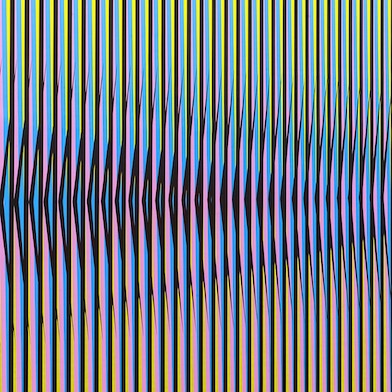
Sign Up & Never Miss a Show
sign up now to GalleriesNow and enjoy
- free weekly opening and closing emails
- free weekly exhibition selection emails
- save and favourite exhibitions
Please tell us about yourself
I am from...
Reset Password
Enter your email address for your account and we'll send a reset link
Search Shows
Unmissable. unforgettable..
Stay up to date with exhibition openings, closings, events and recommendations with our weekly emails. Favorite, save and share exhibitions.
By signing up you agree to our Privacy policy
Have an account? Sign in
I agree to GalleriesNow Terms and Conditions and consent to being contacted by email and/or via my phone number.
Share with a friend
Favorite the show:.
- favorite gallery
- favorite artist
- share on facebook
- get in touch with gallery
- Museum Highlights
- Online Exhibitions
- Available Works
- Consignments
- Utopia Editions
- Gallery Locations
- Collection ( ) Collection ( )
Three Sentence Reviews of Marlene Dumas, Dan Colen, and 11 Other Art-World Big Shots
May 31, 2018
Jordon Wolfson’s videos (of extreme violence or a rabbi spouting sexual gibberish) and sculptures (an animatronic lap-dancing doll or a gigantic Pinocchio figure jerked around and smashed to the floor by an elaborate computer-controlled mechanical rigging) incubate such polyps of discomfort within me that, since he emerged around 2009, I’ve found myself skittish to say that I think he’s a maybe great artist. His latest video — comprised of 16 interconnected and ultracoordinated monitors, like one giant flat-screen TV in the middle of this huge carpeted gallery — isn’t as threatening or scary as previous works, and may not be up to snuff insofar as the ambiguity and open-endedness that he usually weaves perfectly — and here tilts a little more toward an inconclusive entertainment. Still, when his male figure suddenly grows breasts and a female rump, sheds them, and then starts running around with his penis out spraying urine all over the screen while Bob Dylan blasts from the superslick, jacked-up sound system, I imagine that any art lover worthy of the term will squirm — which is this artist’s sweet spot.
Vulture, review by Jerry Saltz
More Articles In The News
We talk to the artist behind that violent VR video at the Whitney Biennial 2018
9 Art Shows to See This Week On and Off Frieze Island 2018
Be the first to know
To learn more about this artwork, please provide your contact information.
By sharing your details you agree to our Privacy Policy and Terms and Conditions . This site is also protected by reCAPTCHA and the Google Privacy Policy and Terms of Service apply.
To learn more about available works, please provide your contact information
By sharing your details you agree to our Privacy Policy and Terms and Conditions .This site is also protected by reCAPTCHA and the Google Privacy Policy and Terms of Service apply.
Artwork Added
Some items are no longer available. Your cart has been updated.
Please note: There’s no guarantee that we can hold this work for you until you complete your purchase
Your Collection is Empty
randian | 燃点
- ANNOUNCEMENTS
- ARTIST PROFILES
- HISTORY & THEORY
- ELSEWHERE CHINA
- THE AMERICAS
- ELSEWHERE WORLD
- >>SPACES<<
- THE PROJECT
- SUPPORT RANDIAN

FILTER EXHIBITIONS
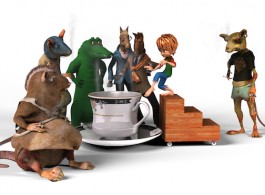
>> Go to website
>> See map
David Zwirner is pleased to present the United States premiere of Jordan Wolfson’s most recent video work, Riverboat song (2017-2018). By turns surreal, deadpan, and mischievous, Riverboat song combines computer-animated vignettes and found video clips with pop soundtracks and a monologue voiced by the artist. Since its debut at Sadie Coles HQ, London, last year, the work has been revisited and expanded by Wolfson, who has added new scenes that will be shown here for the first time. On view at the gallery’s 533 West 19th Street location, this will be the artist’s third solo exhibition with David Zwirner.
Over the past decade, Wolfson has become known for his thought-provoking works in a wide range of media, including video, sculpture, installation, photography, and performance. Pulling intuitively from the world of advertising, the Internet, and the technology industry, he produces ambitious and enigmatic narratives that frequently feature a series of invented and appropriated animated characters.
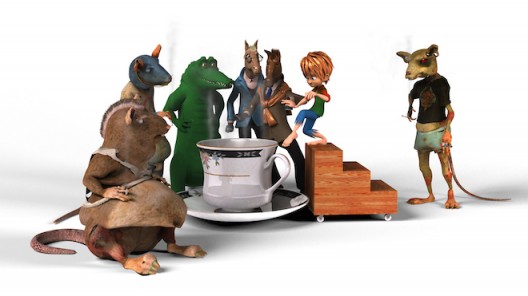
Riverboat song, 2017–2018 (still) Jordan Wolfson Sixteen (16) monitor video wall, 7:23 min, color, sound Dimensions vary with installation Edition of 5, 2 AP © Jordan Wolfson Courtesy the artist, David Zwirner, New York/Hong Kong, and Sadie Coles HQ, London
Presented across a sixteen-monitor video wall, Riverboat song revolves around one of the artist’s recurring figures, a Huckleberry Finn/Alfred E. Neuman hybrid that appeared in animatronic form in his 2016 work Colored sculpture. Opening with a seductive dance number and later delivering a cajoling and coercive address to an absent lover, this figure is but one of a disparate array of animated avatars, including a group of smoking rats, a pair of horses, and a bathing crocodile, that Wolfson employs throughout the video. The closing section of the work shows Wolfson surfing through YouTube, with clips ranging from instructional videos to a vicious brawl that served as the impetus for the artist’s 2017 virtual reality work Real violence, which was featured in the Whitney Biennial that year. In Riverboat song, as in much of his work, the artist creates an idiosyncratic juxtaposition of banality and barbarity that speaks directly to the algorithmic logic of contemporary digital culture.
Jordan Wolfson was born in 1980 in New York. In 2003, he received his BFA in sculpture from the Rhode Island School of Design. In 2013, the artist joined David Zwirner and the gallery has presented solo exhibitions of his work in New York in 2014 and 2016.
At this year’s edition of Frieze New York (May 3–6, 2018), David Zwirner will feature several new wall-mounted sculptural works by the artist in a two-person presentation alongside work by Josh Smith. Also this spring, the inaugural London presentation of Wolfson’s Colored sculpture (2016) will take place in the Tanks at Tate Modern.
Produced by Sadie Coles HQ, London, Riverboat song debuted there in 2017. The work has since been on view in solo exhibitions at Pond Society, New Century Art Foundation, Shanghai (2017) and the Schinkel Pavillon in Berlin (2018).
In 2016, the Stedelijk Museum in Amsterdam hosted a two-part solo exhibition, MANIC/LOVE/TRUTH/LOVE, a survey of Wolfson’s work that featured the animatronic sculptures Colored sculpture and (Female figure) (2014) alongside a selection of video works and objects. In 2015, the Cleveland Museum of Art held a solo show featuring two early videos by Wolfson. In 2014, a selection of his video work was shown at the McLellan Galleries in Glasgow as part of the 6th Glasgow International. Also in 2014, the artist participated in 14 Rooms, which was curated by Klaus Biesenbach and Hans Ulrich Obrist and presented during Art Basel. The exhibition was a collaboration between Fondation Beyeler, Art Basel, and Theater Basel.
Organized by the Stedelijk Museum voor Actuele Kunst (SMAK) in Ghent in 2013, Jordan Wolfson: Ecce Homo/le Poseur featured a survey of his recent video work. Also in 2013 his first solo exhibition in the United Kingdom was presented at the Chisenhale Gallery in London. Other institutions which have previously hosted solo shows include Kunsthalle Wien, Vienna (2012); REDCAT, Los Angeles (2012); Kunstsammlung Nordrhein-Westfalen, Düsseldorf (2011); CCA Wattis Institute for Contemporary Arts, San Francisco (2009); Swiss Institute of Contemporary Art, New York (2008); Galleria d’Arte Moderna e Contemporanea di Bergamo, Italy (2007); and Kunsthalle Zürich (2004).
In 2009, he received the prestigious Cartier Award from the Frieze Foundation, which helps an artist from outside the United Kingdom realize a major project at Frieze Art Fair in London.
Work by Wolfson is held in public collections worldwide, including The Broad, Los Angeles; Cleveland Museum of Art; Fondazione Sandretto Re Rebaudengo, Turin; Fonds national d’art contemporain (FNAC), Paris; Galleria d’Arte Moderna e Contemporanea di Bergamo, Italy; LUMA Foundation, Zurich; Moderna Museet, Stockholm; Museum of Contemporary Art Chicago; Museum Ludwig, Cologne; The Museum of Modern Art, New York; Stedelijk Museum voor Actuele Kunst (SMAK), Ghent; and the Whitney Museum of American Art, New York. He lives and works in New York and Los Angeles.
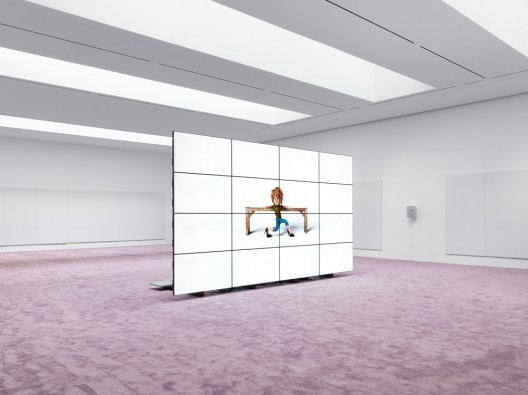
- Legal Notes
- Ethics Policy
- Copyright Notice
Awesome, you're subscribed!
Thanks for subscribing! Look out for your first newsletter in your inbox soon!
The best of London for free.
Sign up for our email to enjoy London without spending a thing (as well as some options when you’re feeling flush).
Déjà vu! We already have this email. Try another?
By entering your email address you agree to our Terms of Use and Privacy Policy and consent to receive emails from Time Out about news, events, offers and partner promotions.
Love the mag?
Our newsletter hand-delivers the best bits to your inbox. Sign up to unlock our digital magazines and also receive the latest news, events, offers and partner promotions.
- Things to Do
- Food & Drink
- Coca-Cola Foodmarks
- Attractions
- Los Angeles
Get us in your inbox
🙌 Awesome, you're subscribed!
Jordan Wolfson: Riverboat Song
- 4 out of 5 stars
- Recommended

Time Out says
Jordan Wolfson raises a baseball bat over his head and smashes it down into another man’s face. He stamps on his head, over and over, squelchy belches singing out with every impact. Then back to the baseball bat – bang, bang, bang – the body’s convulsing, its face a mush. In the background, a cantor sings a Jewish prayer. Then you take the virtual reality goggles off and you’re back in the real world, you feel shaky and disoriented, palms sweaty, arms heavy. ‘Real Violence’ by this young American artist is stomach-turning, shocking and horrifying, but it’s also one of the most important works of art you will see this year.
This two-space show is made up of a massive video installation at Kingly Street and two sculptures and the VR work at Davies Street. The sculptures are a wood cabin with a contorted witch’s face for a roof and a massive articulated doll of a boy, all in black, lying prostrate in chains, its face an evil grimace. They’re childhood fairytales with the sugar taken out, leaving behind pure horror.
Wolfson has covered the bigger gallery with purple carpet and a collection of flat screen TVs showing ‘Riverboat Song’, a short animated movie centred on an adorable little animated boy, cherubic and mischievous. It lacks the aggression of ‘Real Violence’ but more than makes up for it in nasty intent.
We all grew up watching the Roadrunner condemning Wile E Coyote to a million humiliating deaths, and Jerry torturing Tom in countless unimaginable ways – cartoons are acceptable violence, they’re safe spaces for dangerous acts. So Wolfson uses them to enact deep-held, unspeakable desires. The little hobo kid in ‘Riverboat Song’ starts off dancing to Iggy Azalea, his movements exaggerated and sexy, then suddenly he grows an enormous pair of boobs which flop out and drop off. Then, with the help of some talking horses and a bathing crocodile, he calmly explains to you how he’s going to manipulate you into a long, abusive relationship that will leave you old, unhappy and unloveable. Then he whips out his tallywhacker and wees into his hand, staring the viewer right in the face while slurping up his own human Lucozade. He pisses in an arc through the air into his mouth, then stamps in his wee and plays in the puddle. It’s all interspersed with YouTube videos of fistfights and intelligent robots.
Wolfson makes you feel like we’re all moments away from staggering violence and moral decrepitude. It’s within us, aching and begging to burst out. Morality is a veil that can drop at any second. We’re constantly surrounded by physical and emotional cruelty – we’re witnesses and accessories to it – either in the culture we consume or the relationships we’re involved in. And what’s amazing is that all that horror and violence is so… easy. It’s so banal, so normal, so natural. Wolfson is opening a little window into the contemporary soul and letting the sewage seep out. His work is obvious and simple, but complex and obscure. Yes, it’s all very contemporary art, and there’s not much here for your gran. But he’s saying something about how we live right now. And the worst thing is, you’ll feel yourself reflected in all of it, and you won’t like what you see.
@eddyfrankel

An email you’ll actually love
Discover Time Out original video
- Press office
- Investor relations
- Work for Time Out
- Editorial guidelines
- Privacy notice
- Do not sell my information
- Cookie policy
- Accessibility statement
- Terms of use
- Modern slavery statement
- Manage cookies
- Claim your listing
- Time Out Offers FAQ
- Advertising
- Time Out Market
Time Out products
- Time Out Offers
- Time Out Worldwide
Item added to cart
Jordan wolfson.
- Installation Views
- Press release
- Exhibition Walkthrough
- Invitation card

In his first exhibition at Sadie Coles HQ, Jordan Wolfson presents a new video, Riverboat song – installed in the Kingly Street gallery – and a group of new works in a parallel display at Davies Street. Over the past decade, Wolfson’s practice has traversed video, film, installation, performance, print and photography. Employing animation, digital imaging and animatronic sculpture, his recent work has centred on ideas of literal and virtual reality, especially the projection of inner impulses (desire, optimism, violence or guilt) into constructed selves or scenarios.
Riverboat song is a narcissistic surreal nightmare, drawn from the banalities and horrors of contemporary life and its online extension. Combining animation and found clips, pop soundtracks and voiceover, the video revolves around a Huckleberry Finn-style character (seemingly lifted from a Disney classic) who has recurred and morphed in Wolfson’s work. In one sequence, the boy delivers a monologue voiced by the artist. Addressed to an absent lover, it is a chain of deadpan statements – confessional, coercive, retributive. The words are funnelled through other cartoon cut-outs including a crocodile in the bath and a pair of dining horses.
Wolfson adapts the formulaic stuff of the internet – avatars, memes, clips and mash-ups – and coerces these into a dark psychodrama. Through a splicing of images and a disconnect between image and script, Riverboat song erases the line between the perverse and the gleeful. The fictive world of animation, which grows more lurid as the video progresses, is contrasted by the found reality of YouTube footage. The movement from animation to YouTube signals a shift from introspection to an outward view – a subjective shift from the images and fantasies of the inward imagination to the outward search for place and identity through the surfing of the web. The act of surfing itself becomes a mirror-portrait of the horrors, injustice and perversions of contemporary life. Wolfson is at once an autobiographer (as participant and witness in the worlds he tracks) and creator of fiction (as the maker of his art).
One clip in Riverboat song shows a pair of brawling men, one viciously raining punches on the other. This clip was the stimulus behind Wolfson’s virtual reality work Real violence (2017), on view at Davies Street, in which the manic brutality of a witness’s iPhone video of real-life violence is translated into a heightened, disorienting, and contextless experience. ( Real violence is also included in 2017 Whitney Biennial). The Huck Finn character is reincarnated in Black sculpture (2017) – a puppet cast from rubber segments, which follows Wolfson’s sculptures (Female figure) (2014) and Colored sculpture (2016). In contrast to those works’ painted finish and dynamic movements, the articulated figure sits motionless and monochrome, suspended between abstraction and figuration. Its eyes are hollow, awaiting animation and character. Its diabolical grin and awkward anatomy nod to the genre of evil dolls and toys, while its disconnected limbs – threaded by metal chains – carry a deeper subtext of latent violence.
The mood pervading Wolfson’s recent work, of a classic American fairytale betrayed, is crystallised in House with face (2017). This is a giant representation of a witch’s face, modelled from faux timber. A pop-cultural image – and ancient cliché of malignant woman – is recast, as if by magic, into the animated roof of a rustic log cabin. Wolfson has spoken of cartoons as constituting “a dream world where anything is possible, but everything is subject to distortion and mutation.” Throughout his latest work, he exploits the distortions of cartoon to render the reality of human acts and behaviours without moralizing or polemic. The power of Wolfson’s work owes equally to the visceral impact of its complex, animated representations – which slide seamlessly from banal to violent, and from vividly imaginary to scarily real – and to its disturbing refusal to judge.
Jordan Wolfson was born in 1980 in New York. In 2003, he received his B.F.A. in sculpture from the Rhode Island School of Design. His work Real violence (2017) is currently on view at the 2017 Whitney Biennial, New York. Solo exhibitions include TRUTH / LOVE and MANIC / LOVE , Stedelijk Museum, Amsterdam (2016 and 2017); Jordan Wolfson: Colored sculpture , LUMA Foundation, Arles, France (2016); Jordan Wolfson: Two Early Works , Cleveland Museum of Art in Ohio (2015); Jordan Wolfson: Ecce Homo/le Poseur , organised by the Stedelijk Museum voor Actuele Kunst (S.M.A.K.) in Ghent (2013); and Raspberry Poser , Chisenhale Gallery, London (2013). Group exhibitions include World As Cartoon , Tate Britain, London (2017); Manifesta 10 , State Hermitage Museum, St. Petersburg (2014); 6th Glasgow International (2014); and 14 Rooms , curated by Klaus Biesenbach and Hans Ulrich Obrist, Art Basel (2014). In 2009 he received the Cartier Award from the Frieze Foundation.
For further information please contact the gallery at +44 (0)20 7493 8611 or [email protected]
This website uses cookies This site uses cookies to help make it more useful to you. Please contact us to find out more about our Cookie Policy.
Cookie preferences
Check the boxes for the cookie categories you allow our site to use
Jordan Wolfson. Riverboat Song
Moderna museet stockholm.
Skeppsholmen Stockholm
artist / participant
Press release.
Jordan Wolfson. Riverboat Song 01.02.2019 – 01.09.2019 Stockholm
Jordan Wolfson is currently one of the most exciting young artists on the American art scene right now. Experience the intense visual world of the video sculpture “Riverboat Song”, where animated characters run amok amid pop music and clichéd clips from the internet.
Wolfson’s latest video “Riverboat Song” (2017–18), was recently added to the Museum’s collection. This video sculpture mixes computer-animated scenes with found clips from the less savoury sides of the internet, loops of pop music and a monologue by the artist himself. The boyish Huckleberry Finn-like protagonist recurs in Wolfson’s works, possibly as an alter ego or a symbol of the American Dream – searching for happiness, adventurous, free. The characters in his often technically advanced sculptures and animations are both fascinating and challenging, often leaving us with a sense of unease. Entertaining and provoking
What might seem like an entertaining flow of randomly arranged imagery in “Riverboat Song” – computer animations, music, garnered partly from popular and internet culture – are, in fact, meticulously composed scenes that put us off balance. Wolfson’s manipulation of the apparently familiar puts trust between sender and receiver to the test.
The artist himself describes that his compass when creating a new work is the search for a specific, real feeling. The road to that experience can be humour, dramaturgical short circuits and a degree of shock. Wolfson belongs to the “post-internet” movement
Wolfson is one of the most exciting young artists on the American art scene right now, whose norm-breaking works occasionally cause outrage, for instance, at the Whitney Biennial in 2017, where he provoked debate when he presented “Real Violence”, a VR work where viewers witness a re-enacted violent assault. He is considered to belong to a movement in art that is sometimes called “post-internet”, which comments on and is inspired by a digital information and consumer society.
Jordan Wolfson finds his reference points in various fields, including the Hollywood movie industry, with its special effects illusions and capacity to manipulate. Production is time-consuming, expensive, and relatively small, and can be seen as a series of works that are “released” one by one, like films or novels. Stunt robots used in Wolfson’s works
Wolfson is known, among other things, for his use of animatronics – a form of jointed robots that can be used for stunt tricks, which Wolfson has programmed with face recognition technology so they can interact with the audience. As in “(Female Figure)” (2014), a monstrous dancer fastened to a mirror, who is both seductive and terrifying. Or, as in “Colored Sculpture” (2016), where a puppet suspended by chains from a gantry system is subjected to a series of mechanical assaults, only to challenge us by uncannily seeking eye contact.
Jordan Wolfson was born in New York in 1980 and now lives in Los Angeles. His works have been shown at Tate Modern, London, S.M.A.K., Ghent, The Broad, Los Angeles, and the Stedelijk Museum, Amsterdam. He has a BFA in Sculpture from the Rhode Island School of Design in New York. He also studied for one year at the Konstfack University College of Arts, Crafts and Design in Stockholm.
Curator: Lena Essling
find exhibitions in
Top 50 cities.
- Australia edition
- International edition
- Europe edition
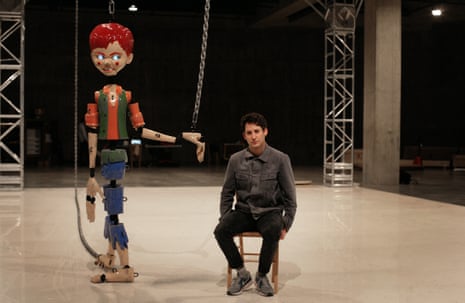
Jordan Wolfson: 'This is real abuse – not a simulation'
Creepy and vengeful, Wolfson’s puppet boy is violently smashed to the floor at Tate Modern – then threatens to fight back. But is the controversial US artist just yanking our chain?
I n a room at Tate Modern , a boy is getting beaten up. He has a chain fixed to the top of his head, another attached to an arm, a third to a leg. As I watch, computer operatives sitting next to me press buttons, activating cranes that pull the chains taut. He spins into the air, limbs fly out, the torso swivels upside down. The chains loosen, he smacks into the ground. Then music kicks in over loudspeakers. Percy Sledge is ardently, if grotesquely inappropriately, singing When a Man Loves a Woman.
The boy is an animatronic puppet, slightly larger than life, with glossy red hair and loose limbs like the 1950s American TV cowboy puppet Howdy Doody . His gap teeth and leering eyes reference Mad magazine’s Alfred E Neuman , his ragged trousers Huckleberry Finn.
It is as if I’m looking at an artist’s meditation on Abu Ghraib or child abuse – a simulation of suffering. The artist, not for the last time in this interview, demurs. “This is real violence,” Jordan Wolfson tells me as the body gets dragged again across the floor, grazing his face. “It’s real abuse, not a simulation.”
How is beating up a puppet real violence? “Because I’m applying real physical violence to a figure even though it’s made of animated parts.”
Tate Modern has just acquired this artwork, entitled Colored Sculpture , for its collection and opens it to the public on 3 May. Neither Wolfson nor the Tate will tell me how much it cost, only that it was bought with funds from Irish art collectors Marie and Joe Donnelly.
Is your piece to do with exploring childhood trauma? “I’m drawing on the figures from when I was a kid, but this isn’t autobiographical. I’m like a sponge, sucking up all those things I see on TV and in the world and putting them in my art. I do it intuitively, not intellectually, and definitely not with an agenda.”
As he speaks, I notice replacement heads and torsos for the puppet lying in readiness. The animatronic boy takes such a thrashing that he has to have new body parts transplanted regularly. The retro vibe of the source material is undercut by the puppet’s state-of-the-art facial recognition software. Sensors inside the puppet’s head scan for human faces in the vicinity and, once found, the puppet’s gaze turns uncannily in their direction.
This is costly art: Wolfson’s animatronic sculptures are made for at least half a million dollars at a special-effects studio in Los Angeles. It’s also vengeful art. The art object has come to life and is staring down the spectator, plotting its revenge after millennia of objectification. As I look at the puppet’s head lying abjectly on the floor, his sinister blue eyes fix sidelong on mine. And then he gets yanked into the air once more, hovering above me like an imperious angel of death. It’s then that Wolfson’s recorded voice lists 18 things the puppet apparently wants to do to me. “Five: To touch you … 13: I killed you. 14: You’re blind … 16: To lift you … 18: To weigh you…”
Next the boy says: “Spit. Earth.” His eyes disappear from their sockets and those two words replace them. Does this puppet want to spit on my grave? Because that’s what I’m hearing. Victim has become aggressor.
It might seem a propitious moment for Wolfson to export what he calls real violence to London. After all, his home city of New York has just been overtaken by London as a murder capital . Perhaps we need American insight into how violence works.
Are you a moralist, I ask Wolfson over green tea in the Tate’s cafe. “I hope not,” he replies. In profile, the handsome 37-year-old reminds me of a young John Cassavetes , a near-permanent hint of a smile by turns making him look knowing, shy and rueful. “I would really hate it if my sculpture is taken as a morality lesson. I’m no moralist trying to shock people into behaving better.”
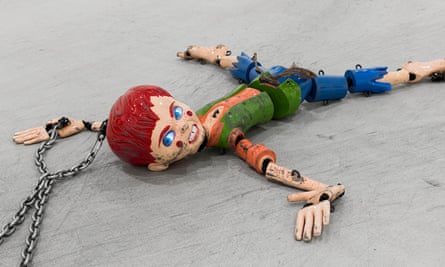
But he is readily taken for one. I quote him a recent review : “Wolfson makes you feel like we’re all moments away from staggering violence and moral decrepitude … morality is a veil that can drop any second.” That’s how Wolfson’s work is regularly decoded – as stripping away the superego and leaving the id in its unbearable nakedness. That’s why his work so often involves sex and violence. It may also be relevant that his mother is a psychoanalyst.
Over the last decade and a half, Wolfson has yanked our chains as he does his puppet boy’s. He has dragged us, often horrified, into witnessing things we’d rather not. He has used animation, digital imaging, animatronic sculpture, performance and photography to project humanity’s basest impulses into constructed selves.
Consider his most notorious work, a virtual reality video called Real Violence that caused a furore when it was seen at the Whitney Biennial in New York last year. Spectators put on virtual reality goggles to witness an iPhone video of Wolfson apparently smashing a baseball bat into another man’s face, then stamping on his head.
When the spectators removed their VR headsets, they returned to a reality transfigured by his art – but not in a good way. Some critics were exasperated at Wolfson’s failure to take a political or moral stance on the violence in his work. “His formalist approach indulges our culture’s fascination with gore and death while ignoring its causes and consequences in the real world,” wrote Mengna Da on the website Hyperallergic .

I ask him if he evades responsibility for the violence in his art? Wolfson cites the great Frankfurt School Marxist philosopher Theodor Adorno . “I had this idea from Adorno that to see the world you need to look at it through a cracked glass. If you imagined your day is a piece of string extending over 24 hours, so it includes your dreams, that string would be punctuated if you witnessed sex or violence, or dreamed about them. The rest of life is kind of flat. And so to see life through that kind of cracked lens is artistically what I want to do.”
No wonder Wolfson is drawn so much to cartoons. He has spoken of cartoons as constituting “a dream world where anything is possible, but everything is subject to distortion and mutation”, and his art is like that. His 2017 video Riverboat Song, for instance, features cartoon cut-outs including a crocodile in the bath and a pair of sleek, animated horses taking breakfast, in a psychodrama in which his recurring Huckleberry Finn-like protagonist dances sexily, then grows huge breasts that ultimately fall off.
Or consider his 2014 piece Female Figure, an animatronic sculpture of a woman in a scanty dress and thigh-high boots. She dances before a mirror on the wall with her back to the spectator, sporting a ghoulish green half witch mask. A metal pole runs horizontally from the mirror into her torso, as if she’s been skewered by the tool of her trade. The sculpture is fitted with motion sensors that are activated when the spectator comes near and with facial recognition software, so if you stand close to the automaton she looks deep into your eyes.
Just as the boy puppet mutates from victim to aggressor, so the Female Figure mutates from sex object to scary monster. One critic even feared the Female Figure looked poised to free herself from her skewer and kill him.
But Wolfson resists my suggestion that his work addresses the violence of objectification. Instead, he cites Georges Bataille’s 1928 novella, Story of the Eye , as inspiring his approach to art. That work, without any apparent moral, dramatised the sexual perversions of two teenage lovers, and included an orgy, broken glass, blood, madness, suicide and necrophilia. “When I read it I wasn’t titillated. I was excited by its freedom,” he says.
“I want to be free in just the same way. I know that if I didn’t do as I felt and I policed myself I would be living a lie. Can’t I talk about violence without being violent? There’s nothing off limits to me, nor should anything be.”
Why do you make art? “Being an artist is a selfish thing. I’m not making this art for a journalist, or anyone else. I’m making this for myself. This isn’t about making people happy or making people like me. Growing up, I wasn’t taught to be liberated, I was taught to be self-conscious. Now I’m grownup I’m just going for it.” He giggles. “Put that in the headline.”
Wolfson seems keen to return to finesse Colored Sculpture for its Tate Modern premiere, so we wander back to the gallery.
Before I leave him to it, I ask him what he wants from people who come to see his art. “I don’t want to come across as egocentric,” he says, “but really I don’t care about your interpretation. I want you to see what I’m seeing.” Maybe we will, but we probably won’t like it.
- Colored Sculpture is at Tate Modern, London , from 3 May to 31 August.
- Installation
- Tate Modern
- Exhibitions
- Virtual reality
Comments (…)
Most viewed.

Independent Art Voice
Jordan Wolfson: Riverboat Song

Jordan Wolfson’s new video, Riverboat song is installed in Sadie Cole’s Kingly Street gallery – and a group of new works in a parallel display at Davies Street. Over the past decade, Wolfson’s practice has traversed video, film, installation, performance, print and photography. Employing animation, digital imaging and animatronic sculpture, his recent work has centred on ideas of literal and virtual reality, especially the projection of inner impulses (desire, optimism, violence or guilt) into constructed selves or scenarios.
Riverboat song is a narcissistic surreal nightmare, drawn from the banalities and horrors of contemporary life and its online extension. Combining animation and found clips, pop soundtracks and voiceover, the video revolves around a Huckleberry Finn-style character (seemingly lifted from a Disney classic) who has recurred and morphed in Wolfson’s work. In one sequence, the boy delivers a monologue voiced by the artist. Addressed to an absent lover, it is a chain of deadpan statements – confessional, coercive, retributive. The words are funnelled through other cartoon cut-outs including a crocodile in the bath and a pair of dining horses.
Also on show at 1 Davies St London W1
New Events Hello Museum
- Get tickets
- Hours & Admission
- Audio Guides
- Digital Archive
- Partnership
- Public Programs
- Publications
- Residencies
- World on a Wire
- Bedtime Stories
- [AR]T in Partnership with Apple
- Mission & Values
- Site Heritage
- Commitment to Racial Equity
- Work With Us
- Terms of Use
- Privacy Policy
Jump To: Today Upcoming Events Past Events
Conversations
- Gallery Talk
- Performances
- Exhibition-Related
- Google Calendar R
First Look: Jordan Wolfson

Jordan Wolfson, Riverboat Song , 2017 (still). Video; 7:27 min. Courtesy the artist
The New Museum and Rhizome present First Look: Jordan Wolfson, a screening of video works by artist Jordan Wolfson followed by a conversation between Wolfson and Aria Dean, Assistant Curator of Net Art and Digital Culture at Rhizome.
Wolfson is well-known for his videos and installations, which often mine pop culture and the everyday to explore technology, gender, sexuality, and violence with a darkly humorous approach. Most recently, he exhibited Real violence (2017), a short virtual reality experience, in this year’s Whitney Biennial. First Look: Jordan Wolfson will screen three of the artist’s works, including Riverboat Song (2017), currently on view at Sadie Coles HQ, London. Following the screening, Dean and Wolfson will discuss the artist’s relationship to technology, masculinity, and the spectacularization and banalization of violence in his work and in contemporary culture.
Jordan Wolfson (b. 1980) received his BFA in sculpture from the Rhode Island School of Design. Solo exhibitions include “ TRUTH / LOVE” and “ MANIC / LOVE ,” Stedelijk Museum, Amsterdam (2016 and 2017); “Colored sculpture,” LUMA Foundation, Arles, France (2016); “Two Early Works,” Cleveland Museum of Art (2015); “Ecce Homo/le Poseur,” Stedelijk Museum voor Actuele Kunst, Ghent (2013); and “Raspberry Poser,” Chisenhale Gallery, London (2013). Group exhibitions include “World As Cartoon,” Tate Britain, London (2017); Manifesta 10, State Hermitage Museum, St. Petersburg (2014); the 6th Glasgow International (2014); and “14 Rooms,” curated by Klaus Biesenbach and Hans Ulrich Obrist, Art Basel (2014). In 2009, he received the Cartier Award from the Frieze Foundation.
Content Warning: The videos included in this screening contain mature content and may not be suitable for all viewers.
Major support for First Look is provided by the Neeson/Edlis Artist Commissions Fund.
Further support is provided by the Toby Devan Lewis Emerging Artists Exhibitions Fund.

Featured events

Upcoming events

Get Updates
Sign up to receive our newsletter., we want to hear from you.
Help us improve our website by taking a 5-minute survey with a chance to win $100!
- Get the app
- Toggle Search
- Toggle Log in
- Online Events
- Artworks for sale
- Editorial Features
Add an Event
Add your contemporary art event to ArtRabbit
Add an Organisation
Add your contemporary art organisation to ArtRabbit
Keyword search
Find events, people, organisations or locations by name
Location search
Use the events or the venues search to find listings near a location.

Jordan Wolfson, Riverboat song
27 apr 2017 – 17 jun 2017, regular hours.
Save Event : Jordan Wolfson, Riverboat song 7
I've seen this 2
Add to my calendar : Jordan Wolfson, Riverboat song in ,
Share : Jordan Wolfson, Riverboat song in ,
People who have saved this event:
Sadie Coles HQ | Kingly Street
London, United Kingdom
- 62 Kingly Street
- United Kingdom
Travel Information
- Oxford Circus, Piccadilly Circus
In his first exhibition at Sadie Coles HQ, Jordan Wolfson presents a new video, Riverboat song – installed in the Kingly Street gallery – and a group of new works in a parallel display at Davies Street. Over the past decade, Wolfson’s practice has traversed video, film, installation, performance, print and photography. Employing animation, digital imaging and animatronic sculpture, his recent work has centred on ideas of literal and virtual reality, especially the projection of inner impulses (desire, optimism, violence or guilt) into constructed selves or scenarios.
Riverboat song is a narcissistic surreal nightmare, drawn from the banalities and horrors of contemporary life and its online extension. Combining animation and found clips, pop soundtracks and voiceover, the video revolves around a Huckleberry Finn-style character (seemingly lifted from a Disney classic) who has recurred and morphed in Wolfson’s work. In one sequence, the boy delivers a monologue voiced by the artist. Addressed to an absent lover, it is a chain of deadpan statements – confessional, coercive, retributive. The words are funnelled through other cartoon cut-outs including a crocodile in the bath and a pair of dining horses.
Wolfson adapts the formulaic stuff of the internet – avatars, memes, clips and mash-ups – and coerces these into a dark psychodrama. Through a splicing of images and a disconnect between image and script, Riverboat song erases the line between the perverse and the gleeful. The fictive world of animation, which grows more lurid as the video progresses, is contrasted by the found reality of YouTube footage. The movement from animation to YouTube signals a shift from introspection to an outward view – a subjective shift from the images and fantasies of the inward imagination to the outward search for place and identity through the surfing of the web. The act of surfing itself becomes a mirror-portrait of the horrors, injustice and perversions of contemporary life. Wolfson is at once an autobiographer (as participant and witness in the worlds he tracks) and creator of fiction (as the maker of his art).
One clip in Riverboat song shows a pair of brawling men, one viciously raining punches on the other. This clip was the stimulus behind Wolfson’s virtual reality work Real violence (2017), on view at Davies Street, in which the manic brutality of a witness’s iPhone video of real-life violence is translated into a heightened, disorienting, and contextless experience. ( Real violence is also included in 2017 Whitney Biennial). The Huck Finn character is reincarnated in Black sculpture (2017) – a puppet cast from rubber segments, which follows Wolfson’s sculptures (Female figure) (2014) and Colored sculpture (2016). In contrast to those works’ painted finish and dynamic movements, the articulated figure sits motionless and monochrome, suspended between abstraction and figuration. Its eyes are hollow, awaiting animation and character. Its diabolical grin and awkward anatomy nod to the genre of evil dolls and toys, while its disconnected limbs – threaded by metal chains – carry a deeper subtext of latent violence.
The mood pervading Wolfson’s recent work, of a classic American fairytale betrayed, is crystallised in House with face (2017). This is a giant representation of a witch’s face, modelled from faux timber. A pop-cultural image – and ancient cliché of malignant woman – is recast, as if by magic, into the animated roof of a rustic log cabin. Wolfson has spoken of cartoons as constituting “a dream world where anything is possible, but everything is subject to distortion and mutation.” Throughout his latest work, he exploits the distortions of cartoon to render the reality of human acts and behaviours without moralizing or polemic. The power of Wolfson’s work owes equally to the visceral impact of its complex, animated representations – which slide seamlessly from banal to violent, and from vividly imaginary to scarily real – and to its disturbing refusal to judge.
Jordan Wolfson was born in 1980 in New York. In 2003, he received his B.F.A. in sculpture from the Rhode Island School of Design. His work Real violence (2017) is currently on view at the 2017 Whitney Biennial, New York. Solo exhibitions include TRUTH / LOVE and MANIC / LOVE , Stedelijk Museum, Amsterdam (2016 and 2017); Jordan Wolfson: Colored sculpture , LUMA Foundation, Arles, France (2016); Jordan Wolfson: Two Early Works , Cleveland Museum of Art in Ohio (2015); Jordan Wolfson: Ecce Homo/le Poseur , organised by the Stedelijk Museum voor Actuele Kunst (S.M.A.K.) in Ghent (2013); and Raspberry Poser , Chisenhale Gallery, London (2013). Group exhibitions include World As Cartoon , Tate Britain, London (2017); Manifesta 10 , State Hermitage Museum, St. Petersburg (2014); 6th Glasgow International (2014); and 14 Rooms , curated by Klaus Biesenbach and Hans Ulrich Obrist, Art Basel (2014). In 2009 he received the Cartier Award from the Frieze Foundation.
For further information please contact the gallery at +44 (0)20 7493 8611 or [email protected]
Have you been to this event? Share your insights and give it a review below.
Please login to add a comment
- THE MAGAZINE
- PHOTOGRAPHY
Jordan Wolfson: Riverboat song / David Zwirner NY
02 MAY (MAY 2) 0:00 23 JUN (JUN 23) 0:00 Jordan Wolfson: Riverboat song / David Zwirner NY David Zwirner NEW YORK , 533 West 19th Street New York

Event Details
David Zwirner presents the United States premiere of Jordan Wolfson’s most recent video work, Riverboat song (2017). Presented across a sixteen-monitor video wall, Riverboat song revolves around
David Zwirner presents the United States premiere of Jordan Wolfson’s most recent video work, Riverboat song (2017).
Presented across a sixteen-monitor video wall, Riverboat song revolves around one of the artist’s recurring figures, a Huckleberry Finn/Alfred E. Neuman hybrid that appeared in animatronic form in his 2016 work Colored sculpture . Opening with a seductive dance number and later delivering a cajoling and coercive address to an absent lover, this figure is but one of a disparate array of animated avatars, including a group of smoking rats, a pair of horses, and a bathing crocodile, that Wolfson employs throughout the video. The closing section of the work shows Wolfson surfing through YouTube, with clips ranging from instructional videos to a vicious brawl that served as the impetus for the artist’s 2017 virtual reality work Real violence , which was featured in the Whitney Biennial that year. In Riverboat song , as in much of his work, the artist creates an idiosyncratic juxtaposition of banality and barbarity that speaks directly to the algorithmic logic of contemporary digital culture.
Get Directions
Calendar GoogleCal
MAY 2 (WEDNESDAY) 0:00 - JUNE 23 (SATURDAY) 0:00
David Zwirner NEW YORK
533 West 19th Street New York


IMAGES
VIDEO
COMMENTS
David Zwirner is pleased to present the United States premiere of Jordan Wolfson's most recent video work, Riverboat song (2017-2018). By turns surreal, deadpan, and mischievous, Riverboat song combines computer-animated vignettes and found video clips with pop soundtracks and a monologue voiced by the artist.
On View. David Zwirner. May 2 - June 30, 2018. New York. We hear Riverboat song (2017-2018) before we see it. The first view of Jordan Wolfson's sixteen-channel video installation is of its back, a hulking mass of wires, monitors and media players arranged in an upright grid on purple carpet that covers the gallery floor.
Video: Jordan Wolfson on Riverboat song and his creative process. Entertaining and provoking. What might seem like an entertaining flow of randomly arranged imagery in "Riverboat Song" - computer animations, music, garnered partly from popular and internet culture - are, in fact, meticulously composed scenes that put us off balance. ...
David Zwirner is pleased to present the United States premiere of Jordan Wolfson's most recent video work, Riverboat song (2017-2018). By turns surreal, deadpan, and mischievous, Riverboat song combines computer-animated vignettes and found video clips with pop soundtracks and a monologue voiced by the artist. Since its debut at Sadie Coles HQ, London, last year, the work has been revisited ...
David Zwirner is pleased to present the United States premiere of Jordan Wolfson's most recent video work, Riverboat song (2017-2018). By turns surreal, deadpan, and mischievous, Riverboat song combines computer-animated vignettes and found video clips with pop soundtracks and a monologue voiced by the artist. Since its debut at Sadie Coles HQ, London, last year, the work has been ...
Jordan Wolfson Riverboat song is at Sadie Coles, Davies Street and Kingly Street, London, until 17 June; Explore more on these topics. Art; Installation; Video art; Exhibitions; Sculpture;
In Riverboat song, as in much of his work, the artist creates an idiosyncratic juxtaposition of banality and barbarity that speaks directly to the algorithmic logic of contemporary digital culture. Jordan Wolfson was born in 1980 in New York. In 2003, he received his BFA in sculpture from the Rhode Island School of Design.
In his first exhibition at Sadie Coles HQ, Jordan Wolfson presents a new video, Riverboat song - installed in the Kingly Street gallery - and a group of new works in a parallel display at Davies Street. Over the past decade, Wolfson's practice has traversed video, film, installation, performance, print and photography.
Back to Jordan Wolfson : Riverboat song Back to Jordan Wolfson : Riverboat song. Three Sentence Reviews of Marlene Dumas, Dan Colen, and 11 Other Art-World Big Shots May 31, 2018. Jordon Wolfson's videos (of extreme violence or a rabbi spouting sexual gibberish) and sculptures (an animatronic lap-dancing doll or a gigantic Pinocchio figure ...
In Riverboat song, as in much of his work, the artist creates an idiosyncratic juxtaposition of banality and barbarity that speaks directly to the algorithmic logic of contemporary digital culture. Jordan Wolfson was born in 1980 in New York. In 2003, he received his BFA in sculpture from the Rhode Island School of Design.
Wolfson has covered the bigger gallery with purple carpet and a collection of flat screen TVs showing 'Riverboat Song', a short animated movie centred on an adorable little animated boy ...
In his first exhibition at Sadie Coles HQ, Jordan Wolfson presents a new video, Riverboat song - installed in the Kingly Street gallery - and a group of new works in a parallel display at Davies Street.Over the past decade, Wolfson's practice has traversed video, film, installation, performance, print and photography.
Konstnären Jordan Wolfson berättar om arbetet med videoskulpturen "Riverboat Song" och om den kreativa processen.Utställningen "Jordan Wolfson: Riverboat So...
Jordan Wolfson. Riverboat Song 01.02.2019 - 01.09.2019 Stockholm Jordan Wolfson is currently one of the most exciting young artists on the American art scene right now. Experience the intense visual world of the video sculpture "Riverboat Song", where animated characters run amok amid pop music and clichéd clips from the internet. Wolfson's latest video "Riverboat Song" (2017-18 ...
Photograph: Jordan Wolfson/courtesy Sadie Coles HQ and David Zwirner Gallery. But he is readily taken for one. ... His 2017 video Riverboat Song, for instance, features cartoon cut-outs including ...
Jordan Wolfson is an American visual artist who lives in Los Angeles. He has worked in video and film, in sculptural installation, and in virtual reality. Biography. ... 2018 - Riverboat Song, David Zwirner Gallery, New York; 2022 - Transformers.
Jordan Wolfson's new video, Riverboat song is installed in Sadie Cole's Kingly Street gallery - and a group of new works in a parallel display at Davies Street. Over the past decade, Wolfson's practice has traversed video, film, installation, performance, print and photography. Employing animation, digital imaging and animatronic ...
First Look: Jordan Wolfson will screen three of the artist's works, including Riverboat Song (2017), currently on view at Sadie Coles HQ, London. Following the screening, Dean and Wolfson will discuss the artist's relationship to technology, masculinity, and the spectacularization and banalization of violence in his work and in contemporary ...
About. In his first exhibition at Sadie Coles HQ, Jordan Wolfson presents a new video, Riverboat song - installed in the Kingly Street gallery - and a group of new works in a parallel display at Davies Street.Over the past decade, Wolfson's practice has traversed video, film, installation, performance, print and photography.
David Zwirner presents the United States premiere of Jordan Wolfson's most recent video work, Riverboat song (2017).
Exhibitions 2019 Jordan Wolfson Selected Exhibitions in 2019: Jordan Wolfson, Riverboat song, Moderna Museet, Stockholm (solo exhibition) Highlights for a Future: De Collectie (1), Stedelijk Museum voor Actuele Kunst (S.M.A.K.), Ghent [collection display] Trouble in Paradise: Collection Rattan Chadha, Kunsthal Rotterdam 2018
Art event in New York, NY by David Zwirner on Saturday, June 23 2018